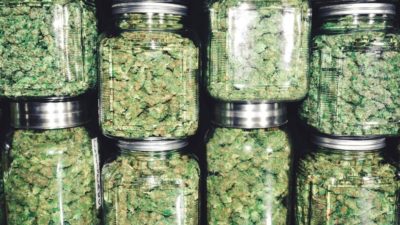Canada’s largest producer of light crude, Crescent Point Energy (TSX: CPG)(NYSE: CPG), continues to be the highest-yielding stock both in the S&P TSX 60 and among its peers in the energy patch, with a yield of 6.3%. However, there are concerns among investors and analysts alike that this monster yield, with a dividend payout ratio of 609%, may be unsustainable.
How sustainable is this yield?
Typically, payout ratios are calculated as total dividends paid as a proportion of a company’s net income. However, for oil companies there is a case for calculating payout ratios as a proportion of dividends paid from cash flow. This is because cash is king in a very capital-intensive industry.
Income statements also include a range of non-cash charges, distorting true cash flow measures and the amount an oil producer can afford to pay in dividends. When using this method, the payout ratio drops to a very sustainable 54% average for the last two years. Furthermore, Crescent Point has a history of consistently making regular monthly dividend payments, doing so since September 2003.
However, of some concern is its large dividend payment, which makes up over half of the company’s operating cash flow and leaves it with a working capital deficit that is being funded by debt.
Since the end of the second quarter of 2012, net debt has grown by 15% to be $203 million as at the end of the first quarter of 2014. However, the company’s net debt as a multiple of cash flow remains quite low at 1.1 times, indicating that it is generating sufficient cash flow to fund its working capital deficit.
This means the company has to both have meaningful oil production growth and maintain its high profit margin per barrel of crude produced if it wants to continue funding its dividend along with interest and debt repayments. For the first quarter of 2014, Crescent Point reported a netback of $52.65, one of the highest in the patch, while production had grown by a massive 35% since the second quarter of 2012. Both of these factors bode well for further cash flow growth and the sustainability of its dividend.
Accretive transactions continue to boost its oil production and cash flow
The company has also completed two accretive transactions this year. First there was the CanEra purchase in May, which saw it acquire a large Torquay land holding, with crude production of 10,000 barrels daily. Then there was the acquisition of the Saskatchewan Viking oil assets of Polar Star Canadian Oil and Gas in June, adding 2,800 barrels of crude production daily.
These transactions have allowed Crescent Point to revise its 2014 guidance upwards to 135,000 barrels of crude for the year, or 13% higher than total 2013 crude production.
Its dividend reinvestment program reduces the financial burden but dilutes existing shareholders
The company also pays a portion of its total dividends in the form of shares through its dividend reinvestment program, thereby reducing the impact of the dividend payment on its finances. Around 28% of total dividends paid are made in the form of additional shares, which works out to be 5% of its outstanding share float annually.
Although this reduces the financial burden of the dividend, it has the consequence of diluting existing shareholders, particularly affecting those who take their dividend in cash. As long as Crescent Point’s share price continues to rise, this will have little to no impact, but if company-specific or industry-wide issues drive down its share price, the impact on those shareholders will be severe.
When all of these factors are considered in conjunction with higher crude prices and narrower price differentials between Canadian light crude and West Texas Intermediate, they bode well for further cash flow growth and the ongoing sustainability of Crescent Point’s dividend. However, investors should keep in mind that any concerted downturn in its operating environment or declining industry fundamentals will impact its ability to generate cash flow, fund its working capital deficit, and affect the sustainability of its dividend.







